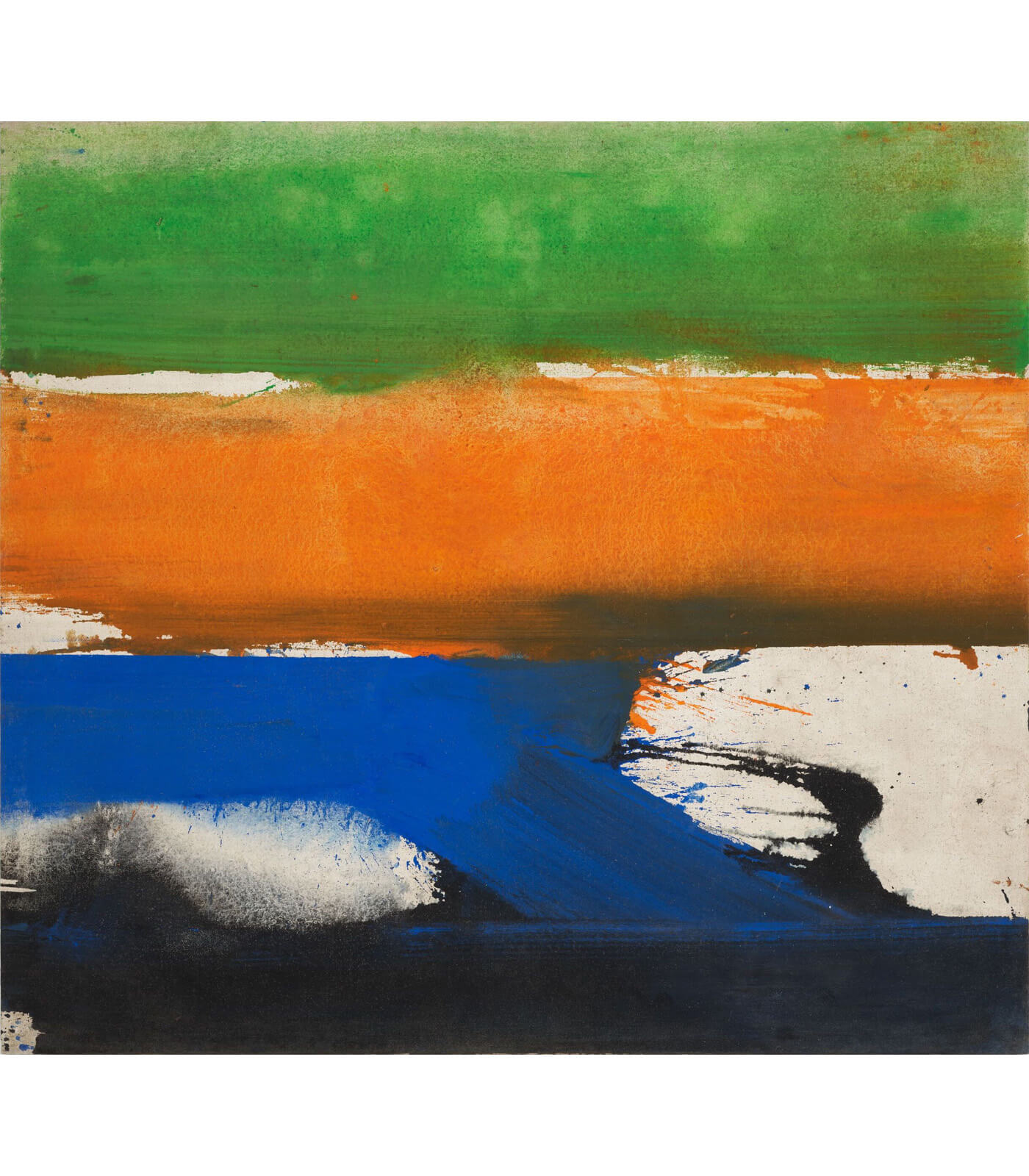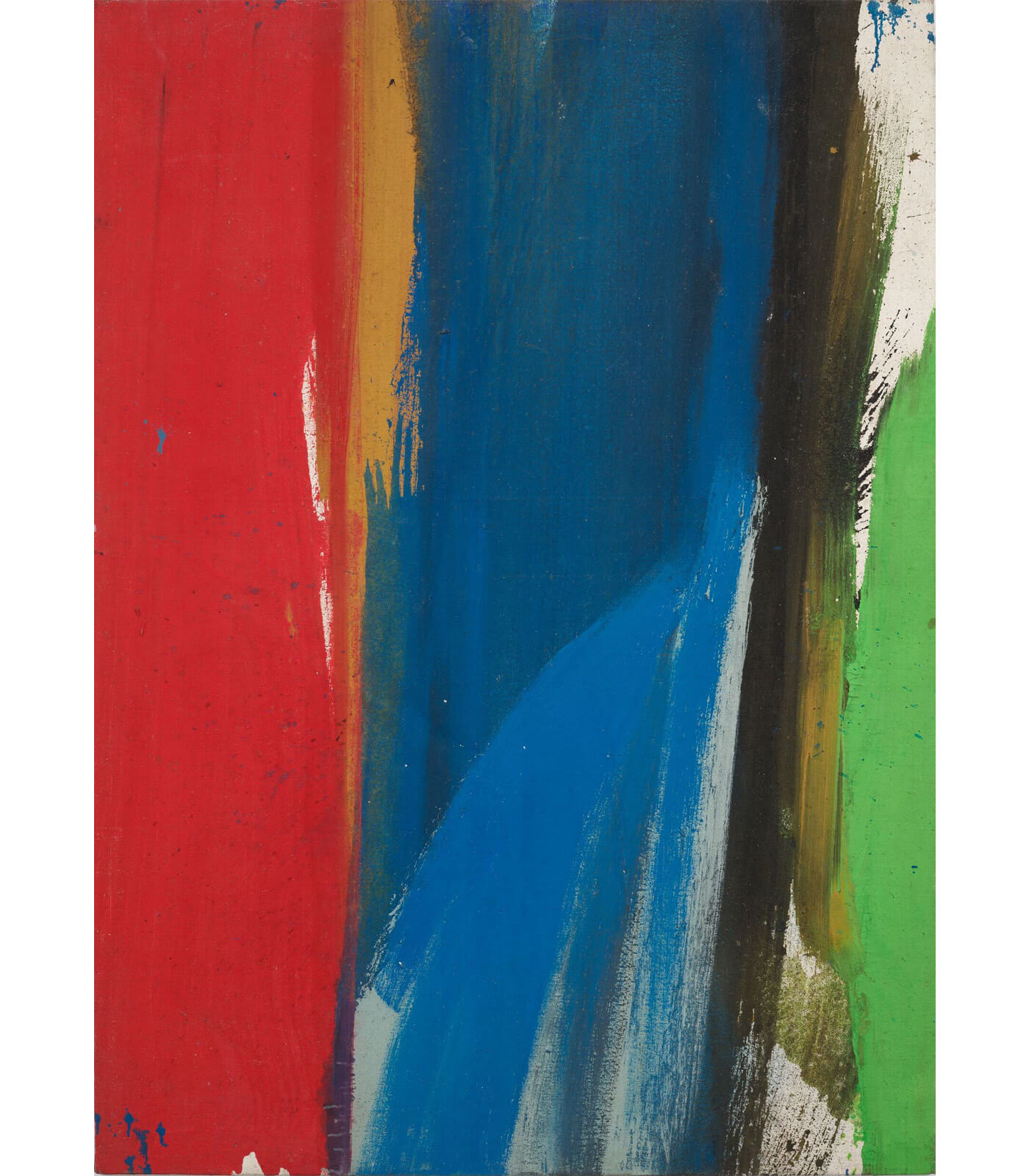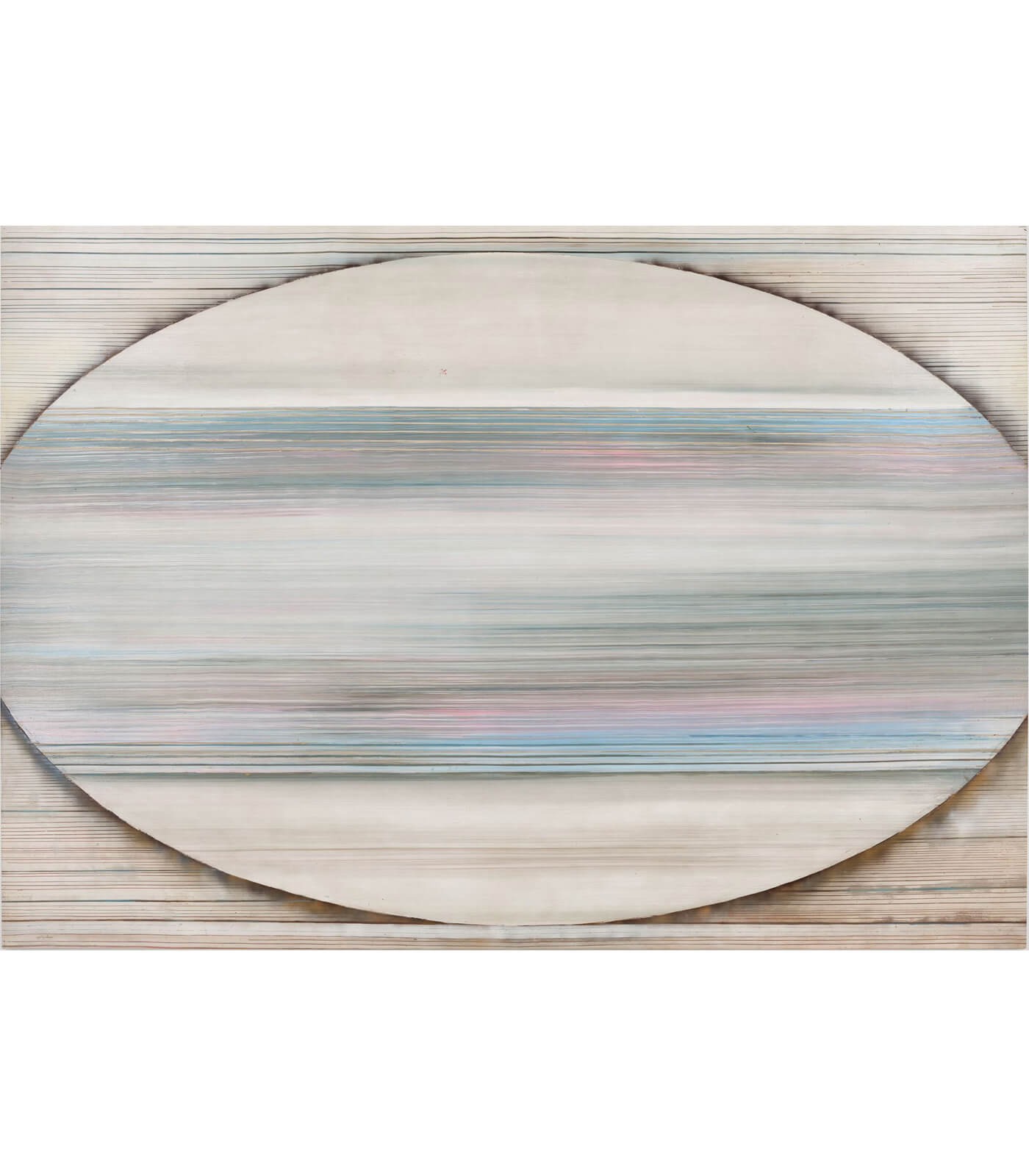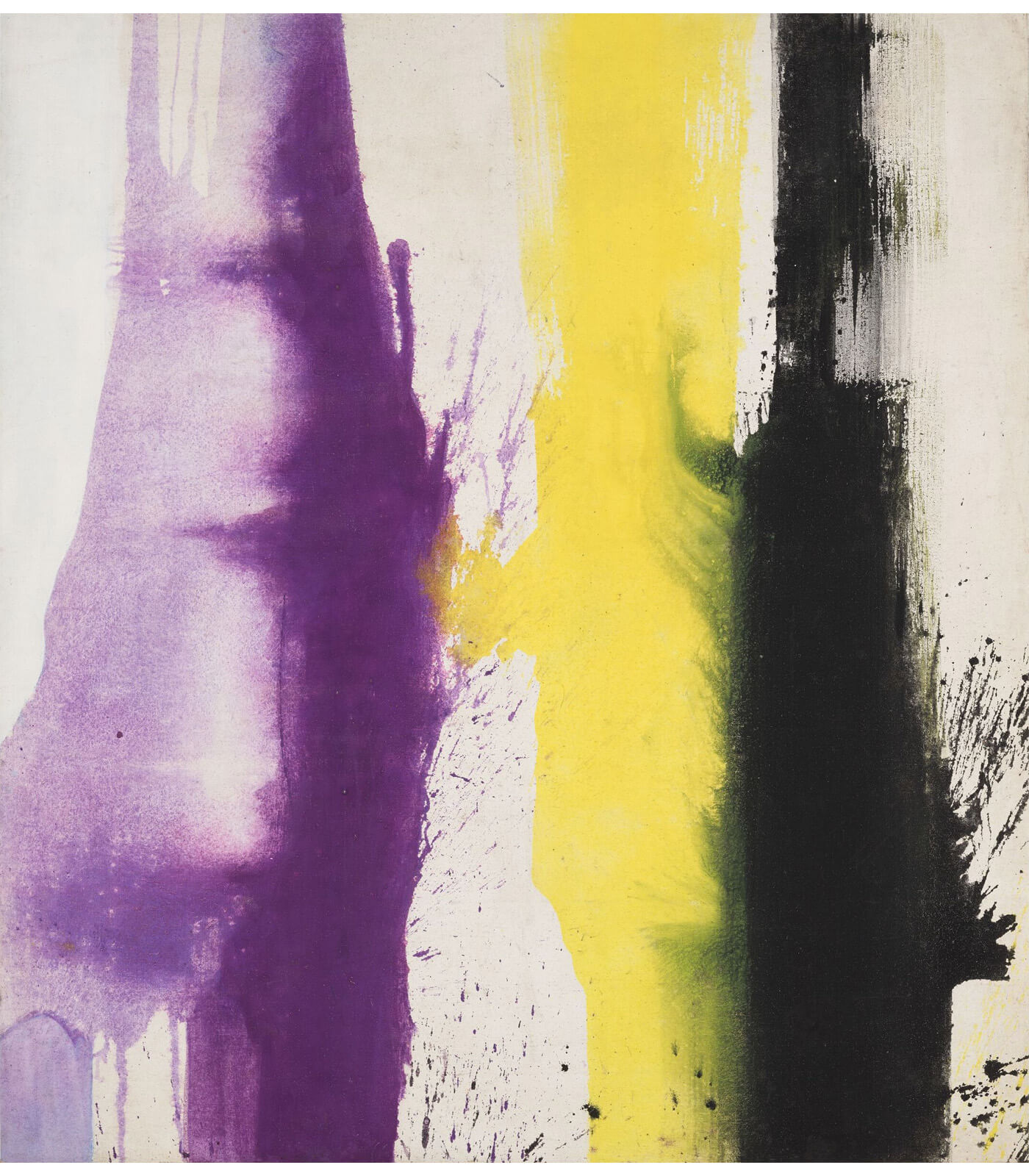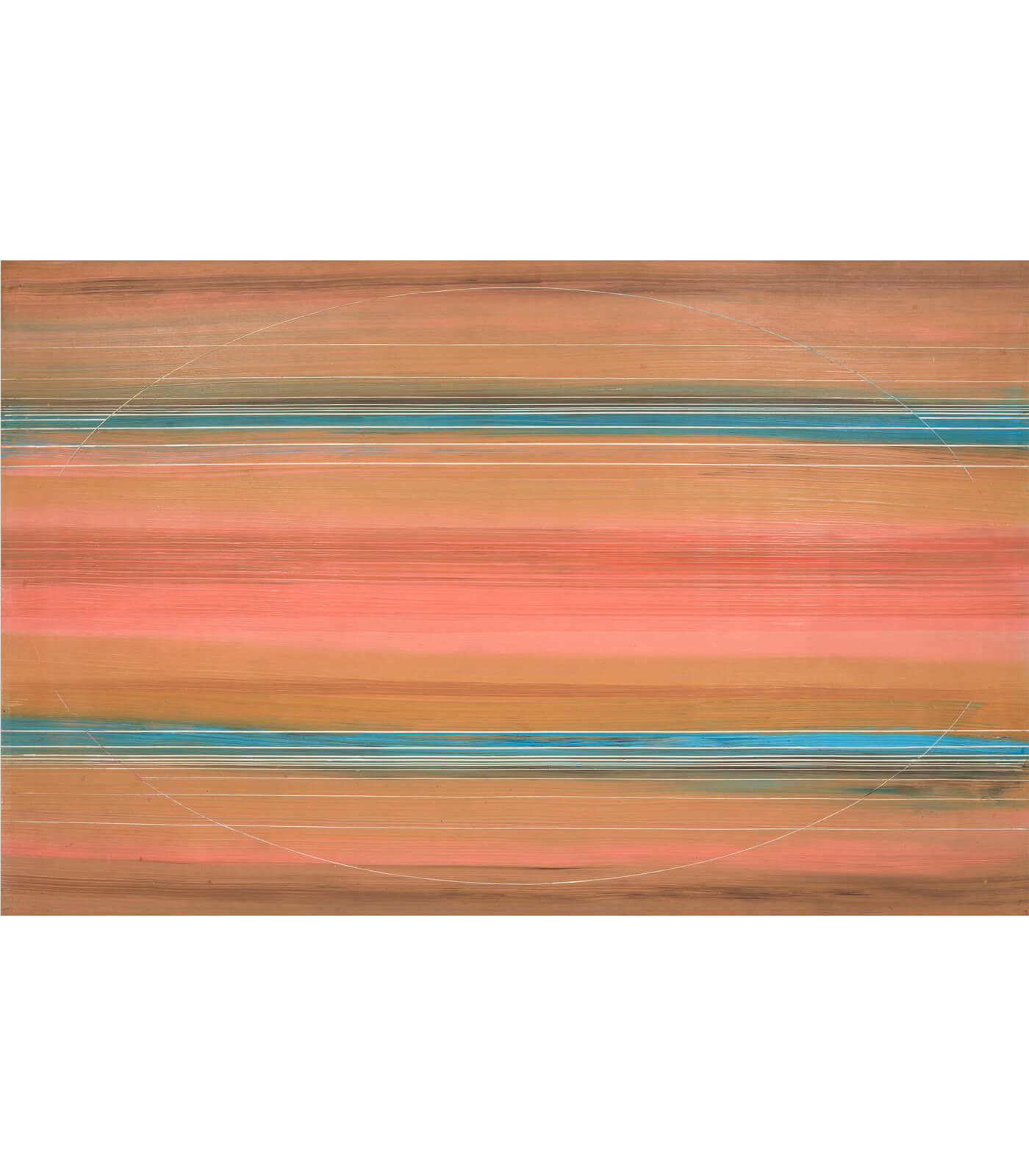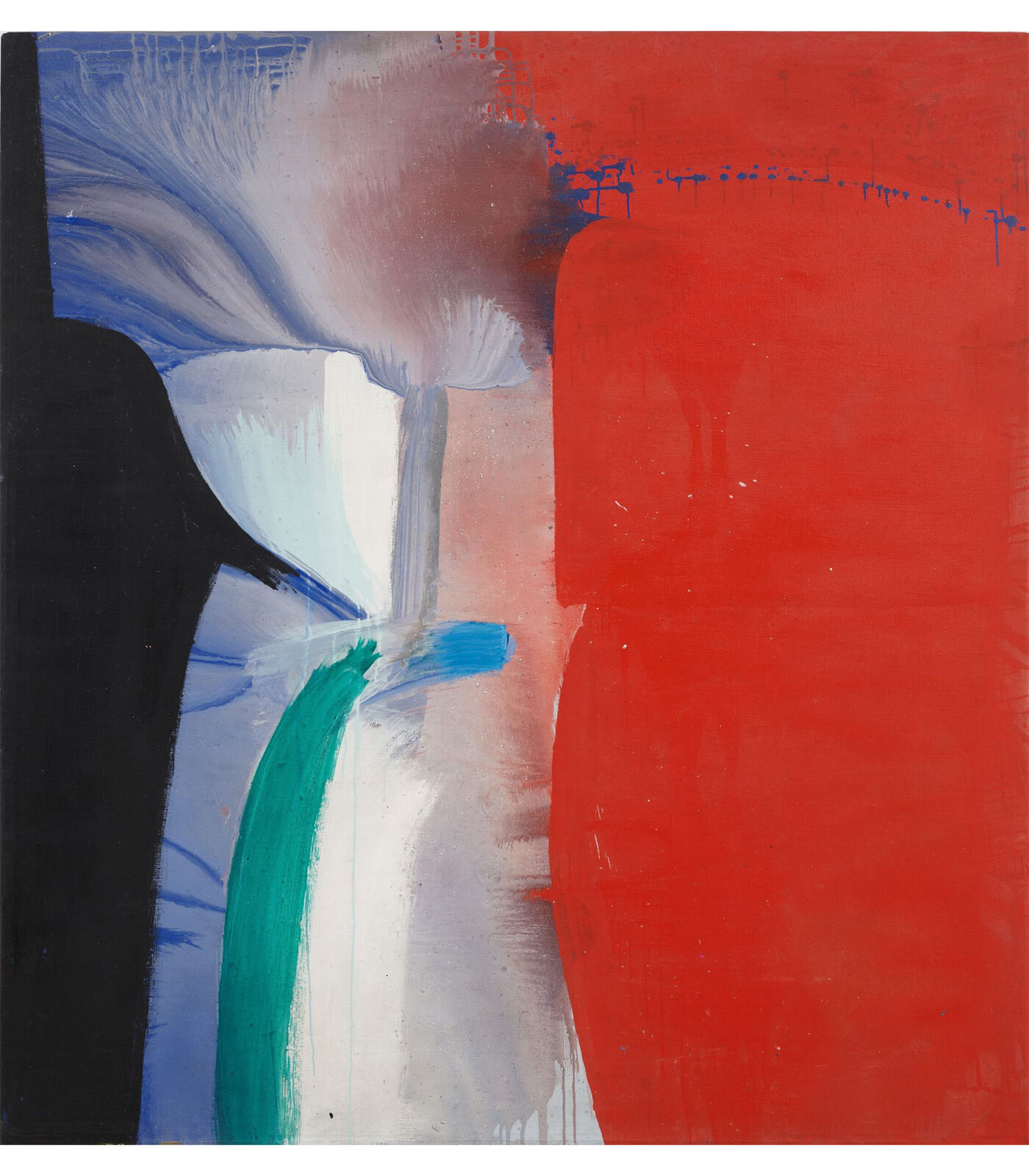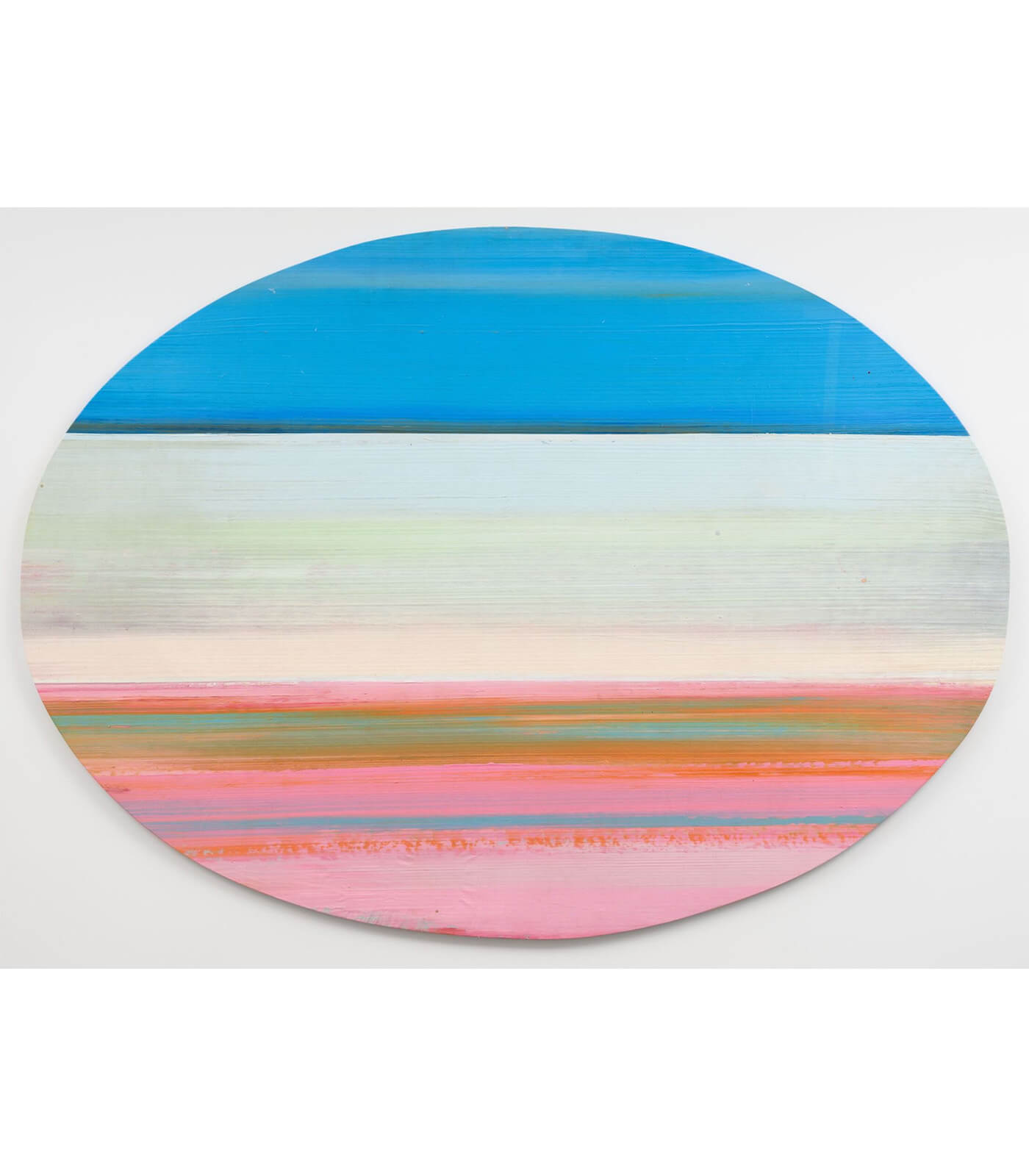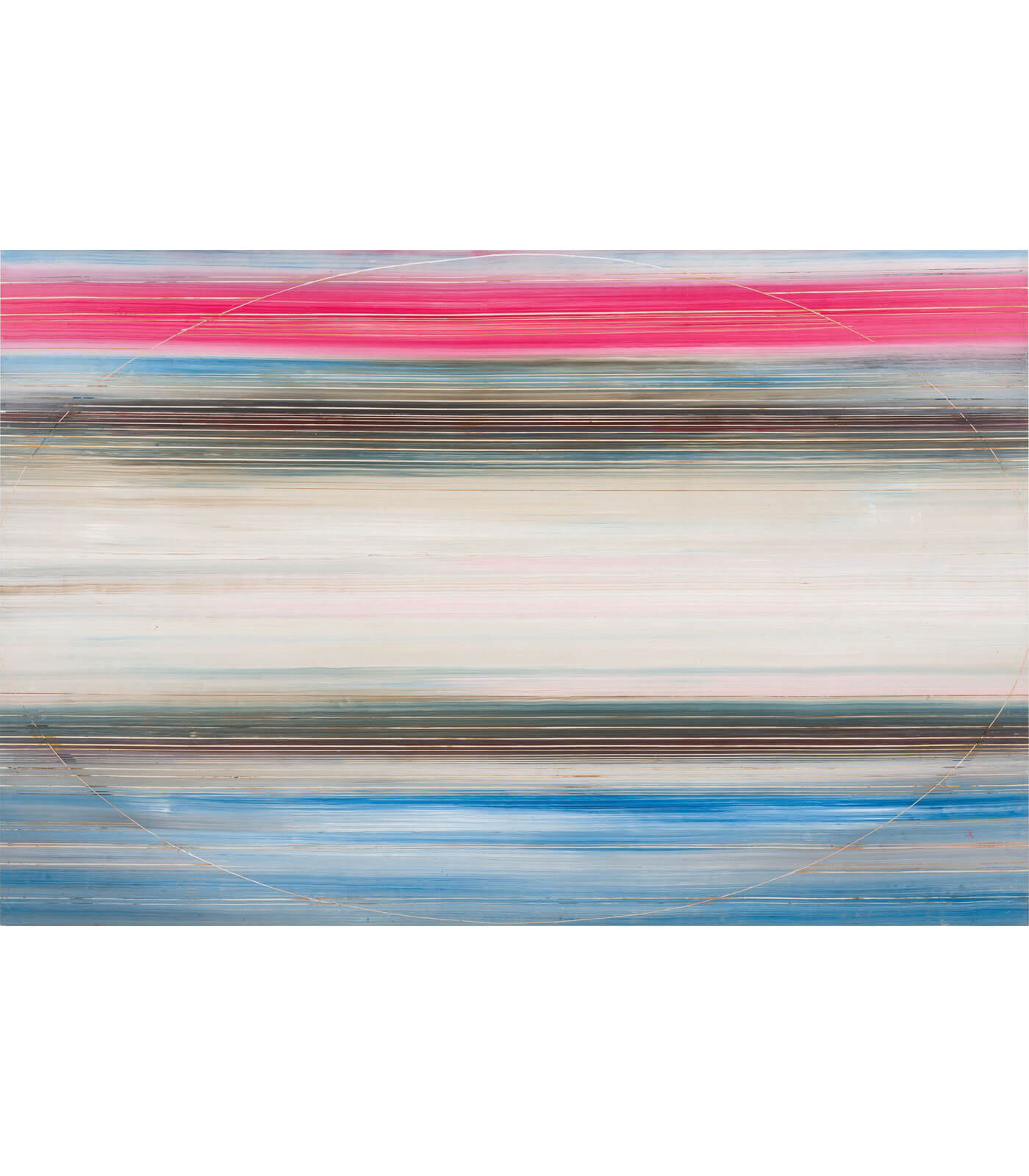
Ed Clark
Expanding the Image
22 August 2020 – 10 January 2021
Los Angeles
‘I began to believe that the real truth is in the stroke. For me, it is large, bold strokes that do not refer distinctly to seen nature. The paint is the subject. The motions of the strokes give the work life.’—Ed Clark
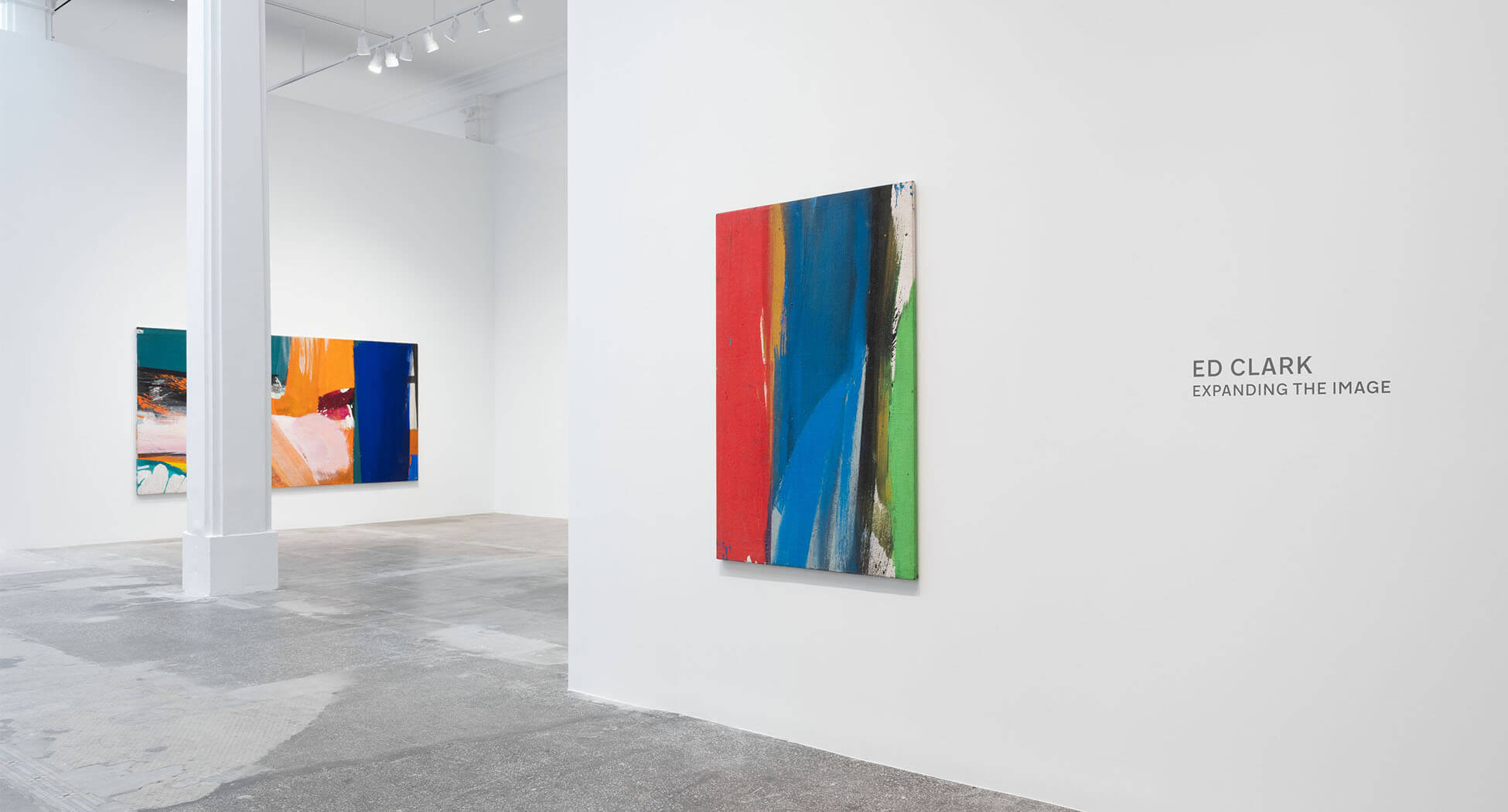
Explore the exhibition
Open through 10 January 2021, this intimate presentation finds Clark solidifying a signature style that evolved from two ground-breaking techniques that he pioneered in the late 1950s: the use of a push broom to handle paint, and the invention of the shaped canvas. Both innovations would become central to Clark’s seven-decade career and support his unique synthesis of European modernism and New York Abstract Expressionism.

A pioneer of the New York School, Ed Clark (1926 – 2019) extended the language of American abstraction beyond expressionism through his inventive use of pure color, abstract form, and the seductive materiality of paint. Following Hauser & Wirth’s recent New York exhibition of Clark’s paintings made from 2000 to 2013, ‘Expanding the Image’ is the gallery’s first exhibition in Los Angeles devoted to the artist. On view are works from his highly formative years of 1960 through 1980, two decades during which Clark made pivotal breakthroughs that expanded the language of abstraction.

In 1956 while living in Paris and finding respite from racial discrimination in America, Ed Clark broke new ground in abstract painting. He was the first artist to use a push broom to literally sweep pigment across the canvas laid out on the floor in what he called ‘the big sweep.’ This idiosyncratic method gave rise to a new type of stroke that allowed Clark to cover large areas with great energy and velocity, while also maintaining straight lines and achieving effects that neither a hand nor standard paintbrush could render.
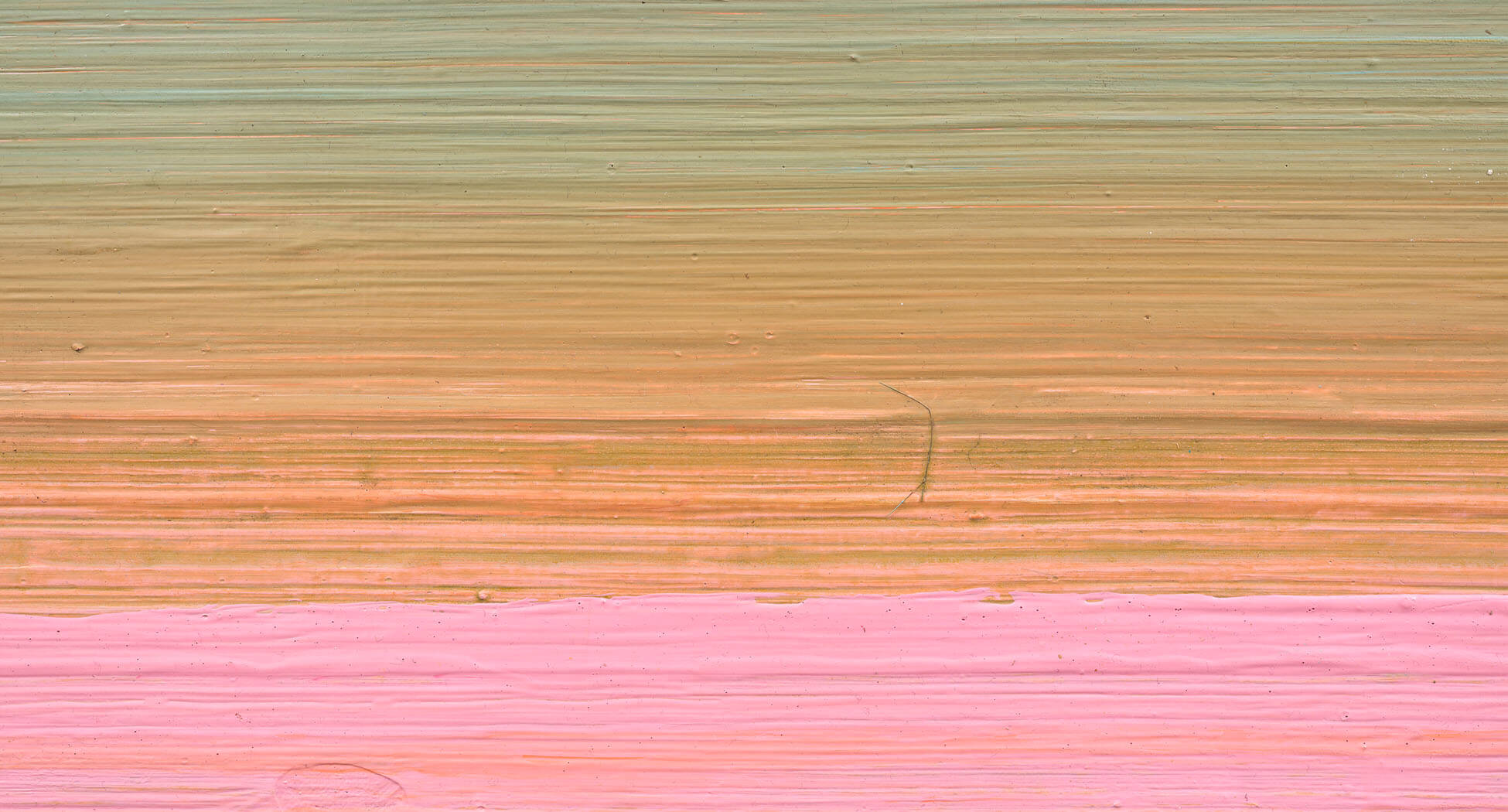
‘It’s like cutting through something really fast; that’s what the push broom gives you, speed. Maybe it’s something psychological. It’s like cutting through everything.’—Ed Clark
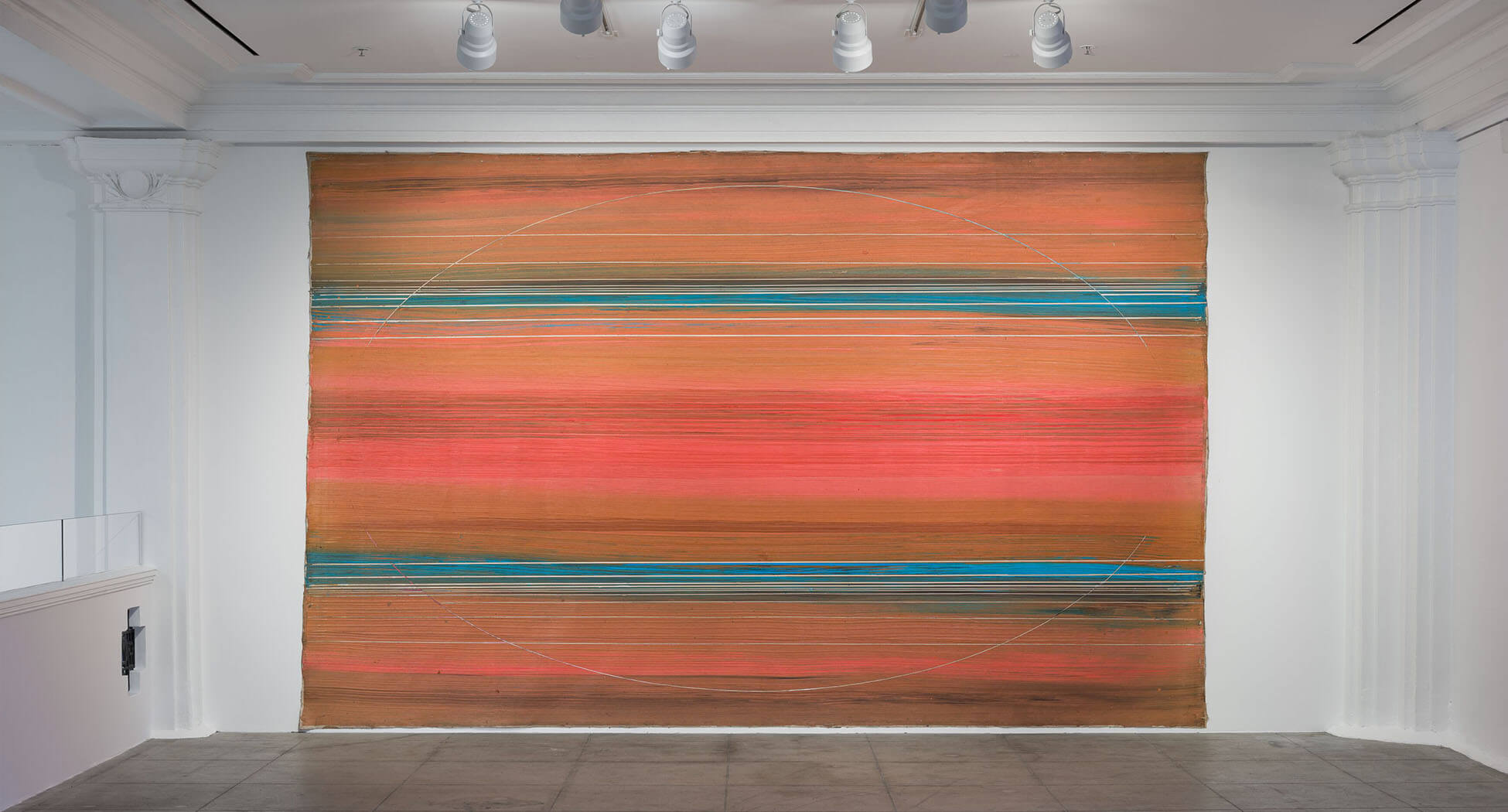
Towards the end of 1956, Clark returned to New York and became part of the city’s downtown scene. Alongside artists Al Held, Sal Romano, John Krushenick, George Sugarman, and Ronald Bladen, he co-founded Brata Gallery, a cooperative among Tenth Street galleries of the East Village, creating a space devoted to changing the way contemporary art was made and exhibited. For the next decade, Clark would use the push broom technique to produce a sense of ‘drive’ within his paintings, producing the levels of force and luminosity seen in such paintings at Hauser & Wirth Los Angeles.
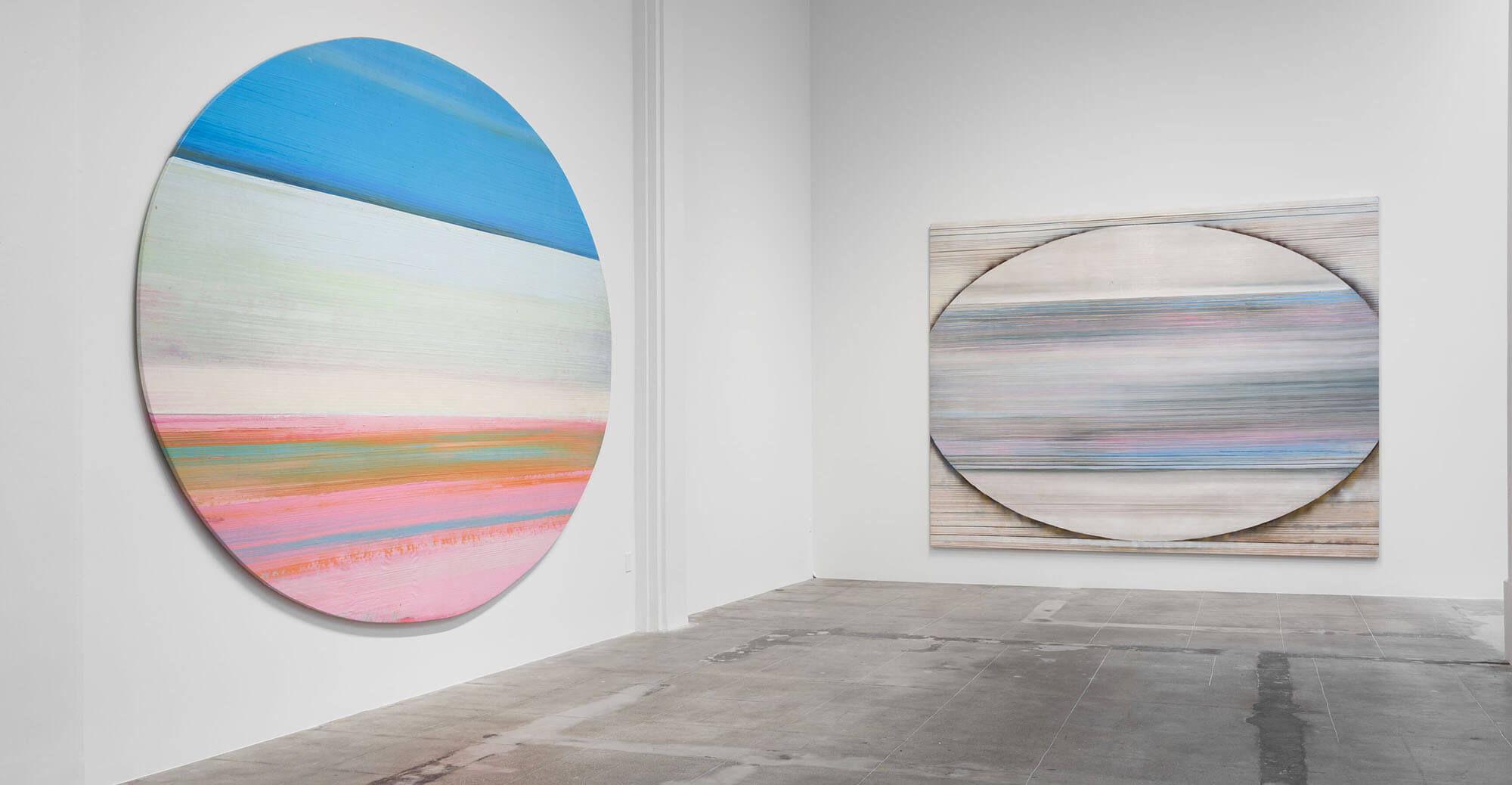
In 1968, Clark began to create elliptically shaped paintings that mimicked the form of the human eye. Through its innovative use of form and color, ‘Untitled’ (c. 1970), a buoyant oval measuring over 13 feet long, blends expansive horizontal swathes of color to both challenge painting’s conventional rectangularity and defy the categorization of gestural and hard-edged abstraction. In keeping with his pursuit to extend the image, Clark subsequently integrated the ellipse within a rectangular canvas, as seen in ‘Integrated Oval #1’ (1972), a monumental painting that was exhibited in the 1973 Whitney Biennial.

On view in Los Angeles
‘Ed Clark. Expanding the Image’ is open for timed viewing appointments. To book a timed viewing appointment, please make a reservation here. Viewing appointments will be released on a weekly basis. Please review viewing guidelines prior to your visit.
About the Artist

Ed Clark
Born in New Orleans in 1926 and raised in Chicago, Clark emerged in the 1950s as a pioneer of the New York School. Over the course of seven decades, his experimentations with pure color, abstract form, and the seductive materiality of paint have yielded an oeuvre of remarkable originality, extending the language of American abstraction. Clark’s breakthroughs have an important place in the story of modern and contemporary art: in the late 1950s he was the first American artist credited with exhibiting a shaped canvas, an innovation that continues to reverberate today. His search for a means to breach the limitations of the conventional paintbrush led him to use a push broom to apply pigment to canvas laid out on the floor. Defying the discreet categories of gestural and hard-edged abstraction, Clark has masterfully interwoven these approaches into a unique form of expressionism.
After studying at the Art Institute of Chicago and L’Academie de la Grande Chaumiere in Paris, Clark continued to live and work in France, absorbing the influence of such European modernists as Nicolas de Staël, Pierre Soulages, and Jean Riopelle. He became a member of a social and intellectual circle of American expatriate artists and writers, including fellow African-American creatives Beauford Delaney, Richard Wright, James Baldwin, and Barbara Chase-Riboud. Clark settled in New York in 1957, where over the ensuing decade he became part of the city’s dynamic downtown scene and a co-founder of the Brata Gallery, an artist-run cooperative among the Tenth Street galleries of the East Village. From the late 1960s until the last decade, Clark split his time between New York and Paris, traveling extensively to other locales from Mexico and Brazil to North Africa and Greece. In 2019, while living in Detroit, Clark passed away at the age of 93. ‘No matter what I do,’ the artist said, ‘there’s not a day that I’m not an artist.’
Inquire about available works by Ed Clark
In a 2019 appreciation of Clark’s work for Luncheon Magazine, celebrated artist Glenn Ligon wrote: ‘It occurs to me that it is not hard to make a good painting every once in a while—but try making great paintings for almost seven decades as Clark has done. And try keeping the work innovative and rigorous when you and your now justly celebrated peers—artists like Jack Whitten, Mel Edwards and Sam Gilliam, Frank Bowling and Howardena Pindell—were not widely exhibited or collected. Yet despite all the challenges he faced throughout his career, Clark has woken up each morning, gone to the studio and got on with it.’
Clark’s paintings reside in the permanent collections of important American museums, including the Whitney Museum of American Art, The Museum of Modern Art, and the Brooklyn Museum in New York, and his oeuvre was recently celebrated in the landmark touring exhibition ‘Soul of a Nation: Art in the Age of Black Power 1963 – 1983.’ The exhibition at Hauser & Wirth Los Angeles seeks to expand awareness of his canonical position in the history of Abstract Expressionism, and his critical role as a continuously and rigorously original artist in the story of American art.
–
‘Ed Clark. Expanding the Image’ is on view now through 10 January 2021 at Hauser & Wirth Los Angeles.
Related Content
Current Exhibitions
1 / 11
